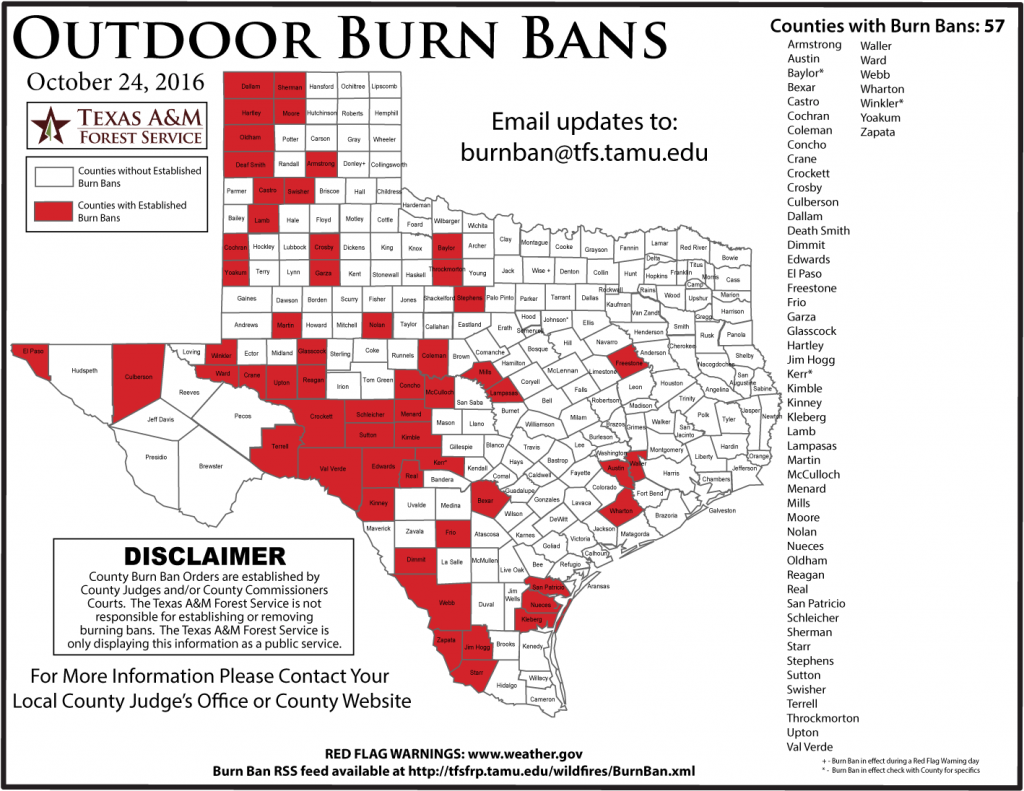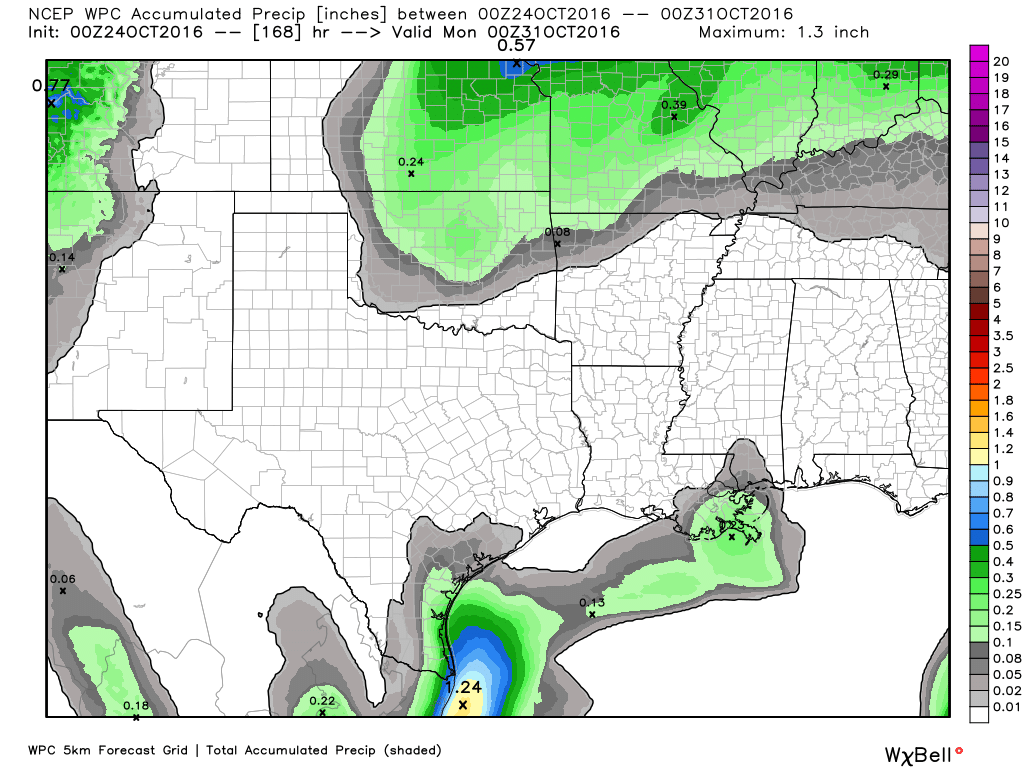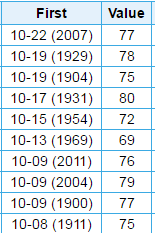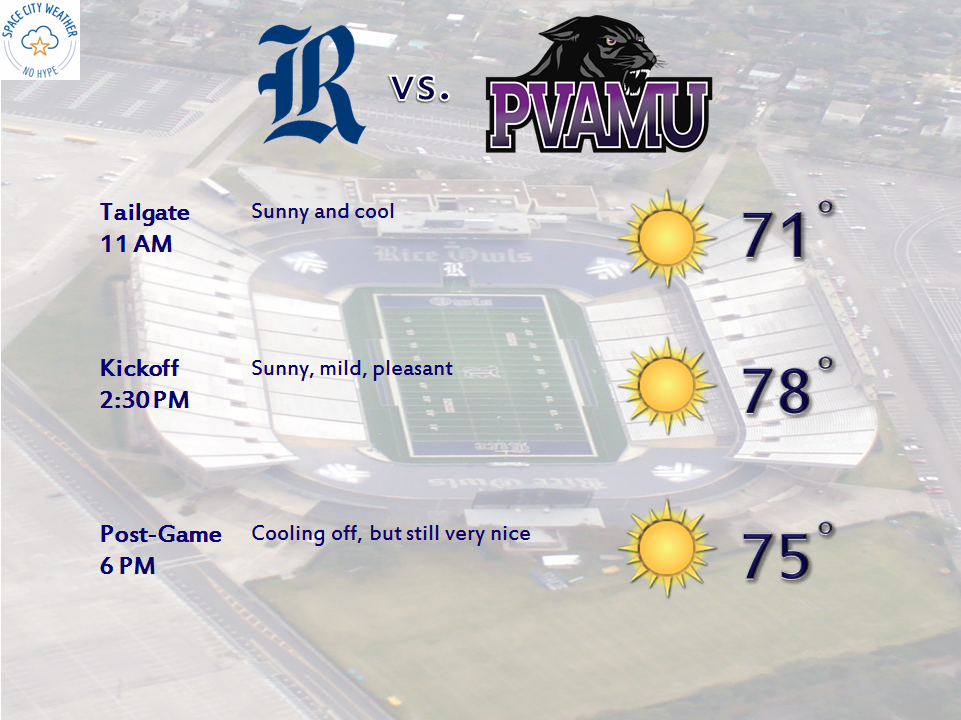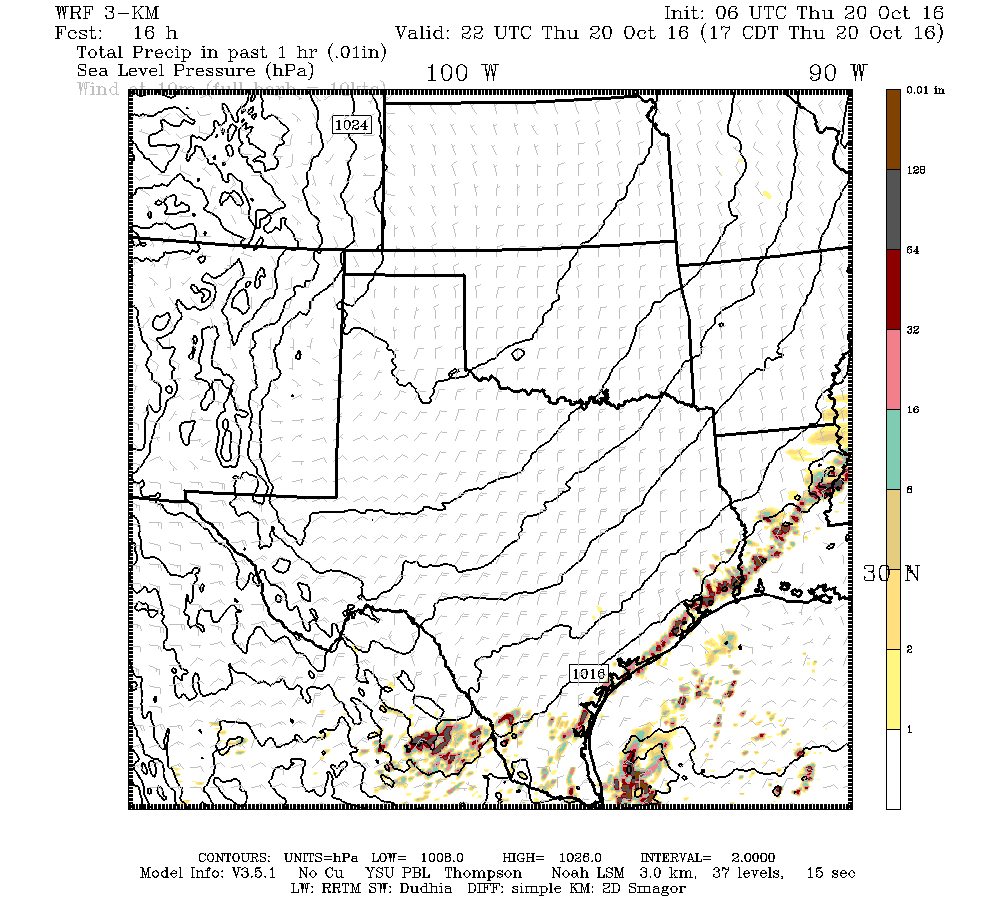With very little (ok, none) rain in the forecast let’s discuss for a moment the possibility of a drought returning to the greater Houston area.
A drought returns?
Harris County hasn’t been in a “moderate” or worse drought since August, 2015. However, last week most of the region fell into the “abnormally dry” category, which is just one step below a drought in the catalog kept by the US Drought Monitor.
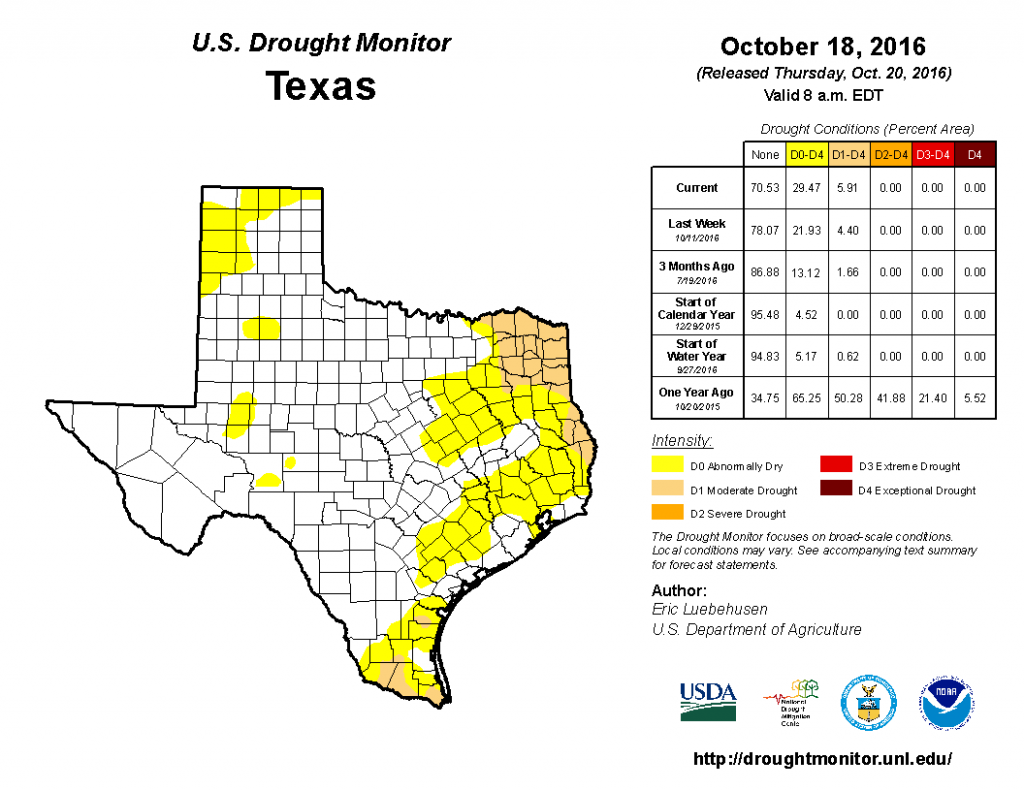
We are starting to see other indications of almost-drought like conditions crop up across the state after a dry late summer and early fall. According to the Texas A&M Forest Service, 57 Texas counties now have burn bans, including Waller, Austin and Wharton counties just to the west of the Houston metro area.
